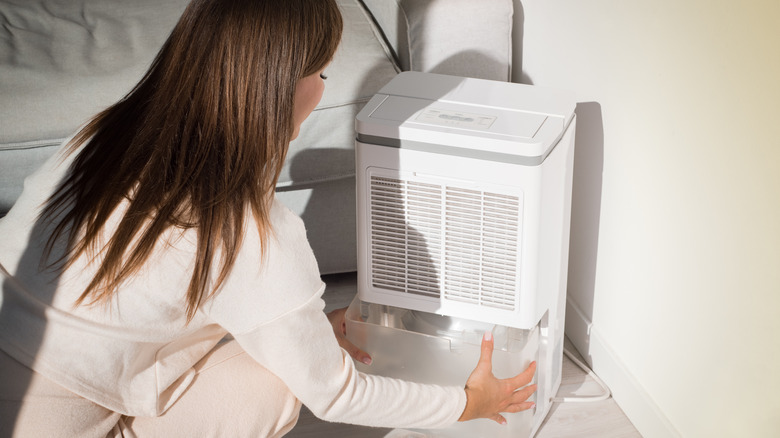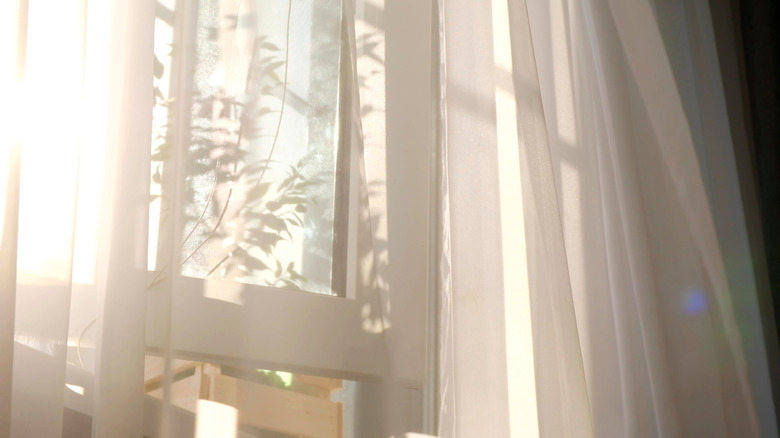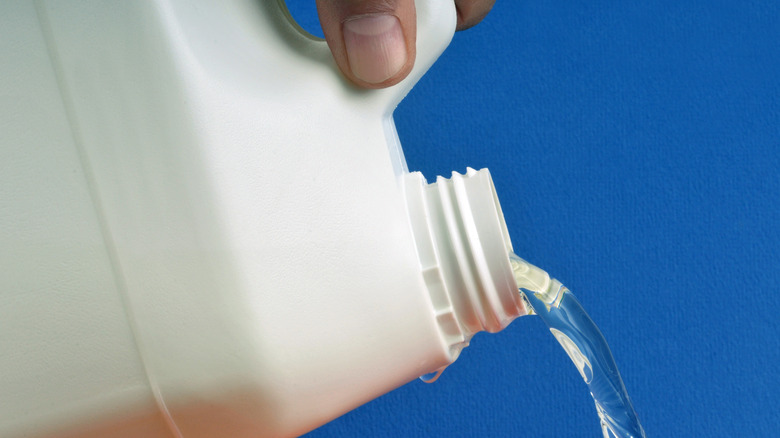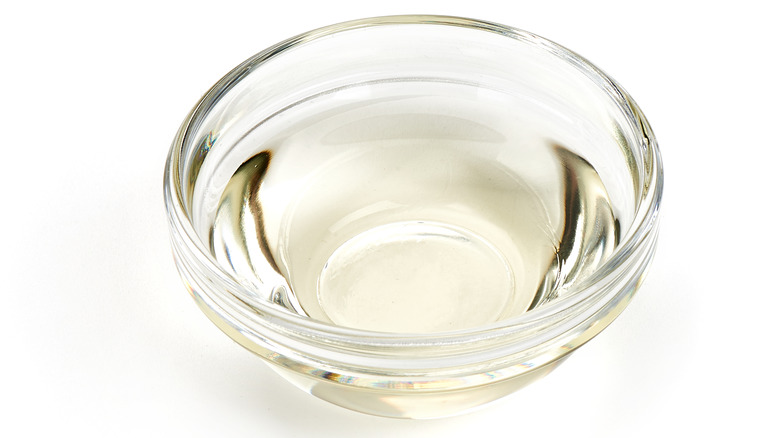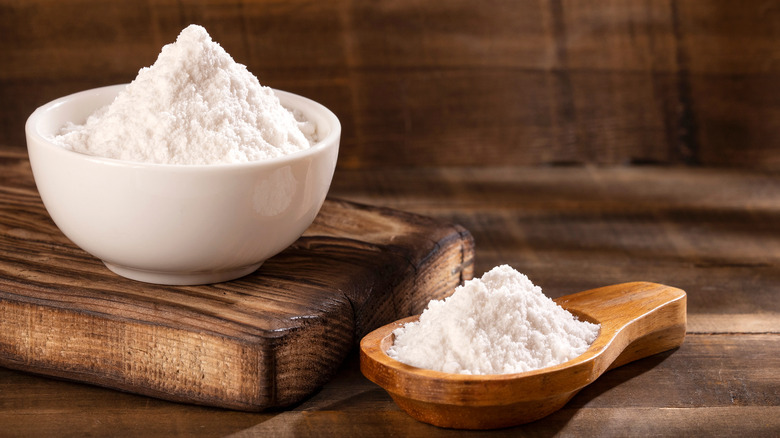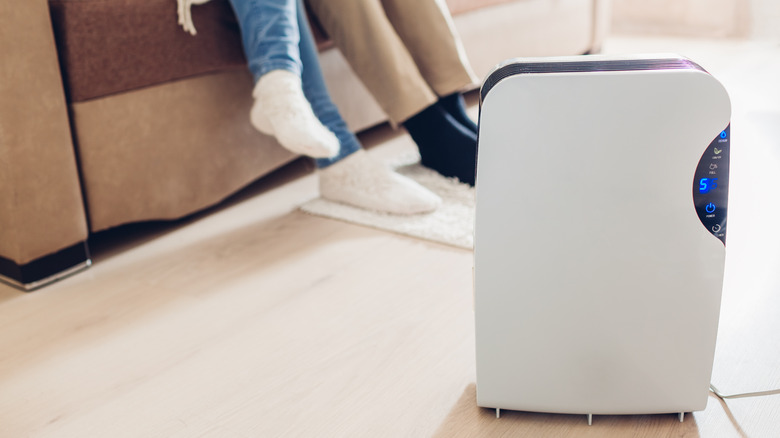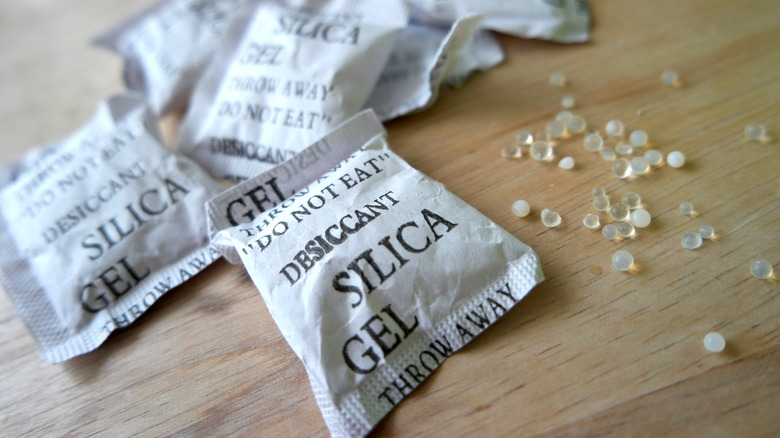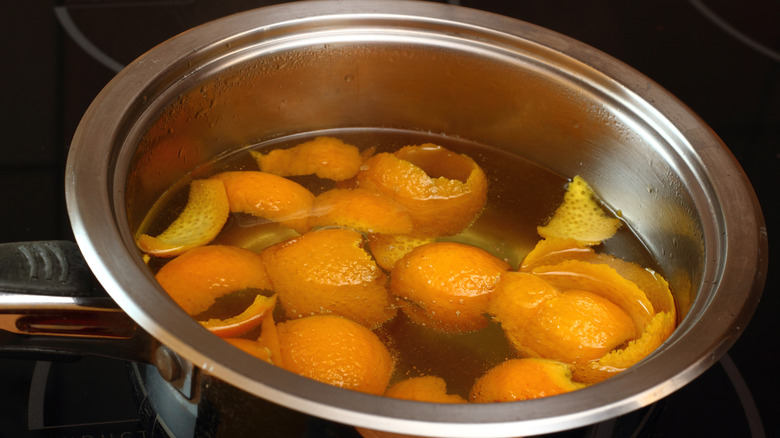8 Best Ways To Get Rid Of Mildew Smell
We may receive a commission on purchases made from links.
The smell of mildew is one of those smells that we want to avoid in our homes at all costs. According to Aire Serv Heating and Air Conditioning, a home with a musty, mildew smell may be suffering from a few culprits. Some of these issues that can bring on foul odors like mold and mildew include broken pipes, a dirty HVAC system, cigarette smoke that has seeped into your home's walls, wet spills that haven't been cleaned up (like when a child spills water), and a home that hasn't had its windows open in years. All of these things attribute to that mildew smell that can be found anywhere in the house, and not only your lower levels.
So what can you do to get rid of that familiar musty smell? Read on to see what will work best in your house! We found eight best ways to get rid of a mildew smell.
Prevention is the key
Just as you can prevent your shag rugs from getting dirty depending on where you place them in your home, and you can prevent kitchen countertops from tarnishing by using beeswax, you can also take some steps to stop mildew from starting at all with a few vital tips.
Homeowners or renters should pay close attention to any foul, musty smells due to mildew before it becomes a significant issue by watching their home's humidity levels. Per the Mayo Clinic, ideal levels of humidity should be between 30% and 50%. Moving.com, part of the Realtor.com network, suggests turning exhaust fans on while taking a shower and keeping areas dry (such as wiping down that puddle of water in the bathroom after you get out of the shower!). They also say to make sure you have some air coming into your home by opening the windows to prevent any mildew smells from forming.
Open the windows and improve airflow
As we mentioned, one of the significant causes of having a home that reeks of mildew is not having proper airflow inside, meaning you never let in fresh air! One effortless way to do this is to open your windows around your house at least once a day for up to 20 minutes to have continuous airflow throughout with focus on a nice cross breeze, per Aunt Fannies, a company that creates plant-based cleaning products. Another brilliant fix is to install ceiling fans in rooms that you would like to have more air flowing throughout, according to All Dry USA, a company specializing in emergency restoration in Florida, Illinois, New York, North Carolina, and Texas.
Per Angi, it's also an excellent idea to check and see if your air ducts have acquired mold. Some of the signs that you may have mold growing are a mildew smell inside your home and issues with your health, including headaches, a runny nose, nausea, and even allergies.
Try a diluted bleach mixture
If you have located the area causing the mildew smell, Bob Vila suggests using a bleach mixture that consists of four parts water mixed with one part bleach to give the area a good scrub with a rough sponge. Healthline suggests using extra protection such as gloves and glasses while cleaning with bleach, and wear some older clothes that you don't mind ruining — when working with bleach, it's likely that they'll become damaged.
However, suppose you're not in the mood to DIY — we totally get that! In that case, several products can be found on the market to treat mold and mildew on various surfaces, such as Concrobium 25326 Mold Control Spray, which can tackle mold and mildew odors, preventing it from coming back. RMR-86 Instant Mold and Mildew Stain Remover Spray is a great option to keep your shower clean and mold-free. If your fabrics and clothes have fallen prey to mildew or mold, there are thankfully products online and in stores tailored to that, too!
Use white vinegar
White vinegar happens to be a staple in our cleaning repertoire here at House Digest, and it's easy to see why. For one, we can pour some in a toilet and watch the stains magically disappear without scrubbing, and this pantry staple can also neutralize laundry odors. It turns out that a vinegar cleaner can be excellent for treating mildew and mold, too. According to Today, this includes stains found on fabrics, carpeting, upholstery, or hard surfaces, whether in the bathroom or kitchen. Now, if you have a piece of clothing that can't be cleaned with bleach, the experts suggest using lemon and white vinegar or taking your item to a professional dry cleaner if that isn't an option.
Moving.com explains that distilled white vinegar sprayed on and left to penetrate for up to four hours can also work wonders to help break up the stubborn mold and mildew stains, and it can start the process of eliminating the smell in your home for good.
Try baking soda and water
Once you've broken up the stain with white vinegar, The Maids, a nationwide company with a variety of cleaning services, suggests that you use a mixture of baking soda and water to scrub away any stains, which should get entirely rid of the mildew smell. The company says that this combination of water and baking soda is excellent at removing harsher molds. Just add 1/4 tablespoon of baking soda to a spray bottle, add the water, shake well, and attack the stain!
Treehugger, a sustainability website, also notes that the combination of water and baking soda is great for attacking mold and mildew. You can even add vinegar to the mixture, which is an ideal option for those looking for a gentle cleanser to mitigate the issue and smell. The trick is giving the solution time to sit before wiping it away with a sponge or cloth.
Get a dehumidifier
It's important to keep your relative humidity level in check — remember, ideally, it should be between 30% to 50% — which is why it's an excellent idea to invest in a dehumidifier. This is especially true if you're looking to get rid of a mildew smell in your home. What does the appliance do, exactly? Well, per Healthline, a dehumidifier pulls the moisture, which causes mold and mildew and their accompanying scent, from the air, so these machines are pretty incredible if you ask us. Portable dehumidifiers can help maintain the proper humidity, which is the end goal, and can be purchased in big box stores such as The Home Depot or Lowe's or online! Getting to the root of the issue will keep you and your home a whole lot healthier.
Bob Vila explains that you can make it so that mold or mildew can't even form by using a dehumidifier. Besides that, the outlet recommends running a fan to keep the area well-ventilated.
Save silica gels or use other humidity eaters
Do you ever notice the silica gel packets in the box when you get certain products? Business Insider writes that people should consider keeping them instead of tossing them. Here's why: These handy little packets are great for sucking moisture out of the air! Who knew? They are also a free way for you to get control of more humid, mildew-smelling areas in your home. While the outlet notes the importance of keeping them out of reach of small children (and pets, for that matter!), keeping these little packets around basements or other areas with moisture is a great way to keep musty smells away. The outlet says silica gel packets can even be used in your sweaty gym bag or to save a water-damaged phone, too!
Now, say you don't have these on hand because you're not a regular shopper. You can still buy other humidity eaters such as charcoal! Hunker suggests trying a DIY with an old coffee can, puncturing it with holes, and placing the charcoal inside to attract excess moisture and fight mildew smells.
Keep odors at bay
You'll want to keep odors out, including those mildewy and musty smells. So hopefully, after you have attempted the above ideas, your musty problems are a thing of the past. But, just in case, there are a few more ideas to keep your home smelling great. Molekule, a leading company for air purifiers and filters, says that you can add fresh-smelling, natural elements to your home by creating your own scents with organic essential oils, such as roses or jasmine plants, and DIY potpourri (just like grandma used to do)! You can even cleanse your home's air (and any negative energies) with sage.
Good Housekeeping recommends putting a pot of fresh citrus peels on the stove. "I learned this from my crafty and cleaning-obsessed mother. Simmer water in a small saucepan and add citrus slices and herbs, like lavender or mint," interior designer Rhobin DelaCruz shares with Good Housekeeping. Once the mold is mitigated and taken care of, replace that stubborn mildew scent with something new, inviting, and fresh — it's foolproof!

